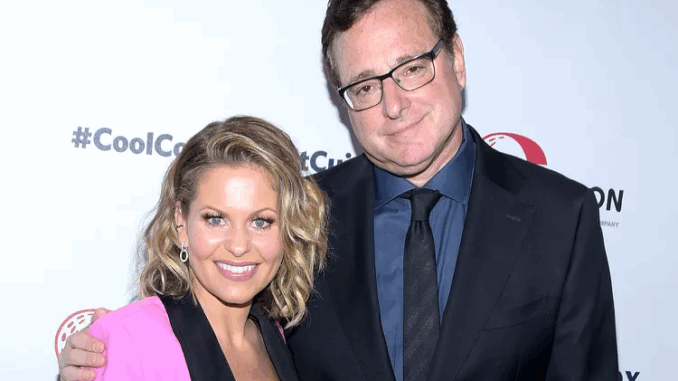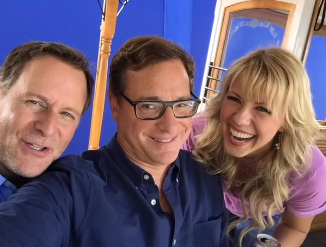
A Show That Stuck With Us
Let’s be real—if you grew up in the ’80s or ’90s, chances are Full House was part of your weekly routine. Maybe even your daily one, if you caught the reruns. But here’s the wild thing: Full House didn’t just fade away like most old sitcoms. It stayed. It became this multigenerational comfort blanket of a show.
So, what’s the deal? Why does a sitcom that ended in 1995 still have people bingeing it on streaming platforms and talking about it like it just aired last week?
Let’s dive deep into what made Full House more than a TV show—and why it remains a cultural icon, even decades later.
The Original Appeal: A Family Show That Felt Like Home
Relatable Yet Wholesome Characters
Each character in Full House brought something to the table. Danny, the neat freak single dad trying to hold it together. Jesse, the cool uncle with a soft heart. Joey, the goofy best friend who became a second father. And then the kids—each with distinct personalities that reflected real sibling dynamics.
They felt like family. Because in a way, they were.
Real-Life Issues, Filtered Through Humor
It wasn’t all corny jokes and hugs. The show tackled serious stuff: loss, peer pressure, growing pains, heartbreak. But it did it in a way that made you laugh, cry, and feel understood—sometimes all in one episode.
Why It Still Resonates in 2025
1. Timeless Family Values
In a world where shows are often edgy for the sake of clicks, Full House reminds us of something simpler: love, patience, and a strong support system. It’s like a warm cup of cocoa in an overstimulated world.
2. Multi-Generational Watchability
Grandparents, parents, and kids can watch it together. No awkward moments. No cringing. It bridges the generation gap better than most shows ever could.
3. Rewatchability Factor
You know those shows that get old after one season? Full House isn’t one of them. You can rewatch episodes from any season and still laugh or tear up. That’s magic.
Casting Gold: Why This Cast Worked So Well
The Perfect Mix of Talent and Chemistry
The casting directors nailed it. Bob Saget’s dry delivery, John Stamos’ charm, Dave Coulier’s silly warmth, and the raw, natural performances from the Olsen twins—it all just clicked.
They Felt Like a Real Family
The behind-the-scenes friendships and bonds translated on-screen. You believed they were family because, honestly, they kind of were.
The Power of Michelle Tanner
An Unexpected Star
Who knew two toddlers could steal an entire show? Mary-Kate and Ashley Olsen brought sass, cuteness, and an endless supply of catchphrases. “You got it, dude!” still lives rent-free in our heads.
Cultural Icon Status
Michelle Tanner became more than a character—she became a phenomenon. Lunchboxes, dolls, T-shirts… she was everywhere.
Uncle Jesse: The Coolest Uncle on TV
The Rebel With a Heart
He rode a motorcycle and played in a band—but also rocked bedtime stories and ponytail holders. Jesse was the ultimate contradiction in the best way.
Role Model Goals
Men wanted to be him. Women wanted to date him. Kids wanted him as their uncle. That’s saying something.
Danny Tanner and the Rise of the “Soft Dad”
Ahead of His Time
Before “girl dads” were celebrated online, Danny Tanner was proudly raising three daughters. He vacuumed obsessively, loved deeply, and wasn’t afraid to cry. He showed the world that dads could be nurturing too.
Comedy That Aged Surprisingly Well
Jokes That Still Land
Sure, some jokes scream “1990s,” but surprisingly, much of the humor still works today. Joey’s impressions, Jesse’s one-liners, and Michelle’s zingers all hold up.
Slapstick + Heart = Win
Physical comedy mixed with emotional depth? That’s the winning recipe that kept people coming back.
Why Kids Still Love It Today
Simple, Fun, and Relatable
Even Gen Alpha kids enjoy it. Why? Because at the end of the day, it’s about siblings, friends, rules, love, and growing up—which never goes out of style.

The Legacy of ‘Full House’ in Pop Culture
It Sparked a Reboot
Fuller House wasn’t just fan service—it proved how enduring the love for this franchise truly was. It ran five seasons on Netflix and brought new stories to a new generation.
Still Quoted Today
Catchphrases like “How rude!” and “Cut it out!” are still being said by people who weren’t even born when the show aired.
How ‘Full House’ Handled Grief and Real-Life Struggles
Tackling Heavy Topics
Loss of a parent. Divorce. First heartbreak. It handled those themes with grace and left kids with tools for understanding their own feelings.
Support Through Storytelling
The show didn’t shy away from sadness—it embraced it. But it always offered a sense of hope, too.
Full House vs. Today’s Sitcoms
No Forced Edginess
Unlike many modern family comedies, Full House didn’t rely on shock value. Its charm came from sincerity.
Consistency Over Gimmicks
It didn’t need viral moments or flashy trends. It focused on good storytelling, lovable characters, and emotional arcs.
The Role of Nostalgia in Its Popularity
A Connection to Childhood
For many of us, Full House feels like a time machine. Watching it again brings us back to a simpler, safer time.
Comfort TV Defined
When life feels messy, we turn to shows that feel like a warm hug. That’s Full House in a nutshell.
Conclusion: Why ‘Full House’ Still Matters
Three decades later, Full House continues to be more than just a sitcom. It’s a symbol of love, resilience, and the power of togetherness. It’s proof that you don’t need explosions or plot twists to create lasting impact—you just need heart.
Whether you grew up with the Tanners or just discovered them, there’s something timeless about their journey. It wasn’t just about a house—it was about the people inside it.
FAQs
1. Why is Full House considered iconic?
Because it combined heartfelt storytelling, lovable characters, and life lessons that still apply today.
2. Can modern audiences relate to Full House?
Absolutely. Themes like family, love, growing up, and dealing with loss are universal.
3. Is Full House still worth watching today?
Definitely. It’s perfect for family viewing and offers a nostalgic escape with timeless values.
4. Did Fuller House live up to the original?
It gave fans closure and continued the story in a modern way, though it leaned more into fan service than subtle storytelling.
5. What sets Full House apart from other sitcoms?
Its unique balance of comedy, emotion, and family dynamics made it both entertaining and meaningful.
